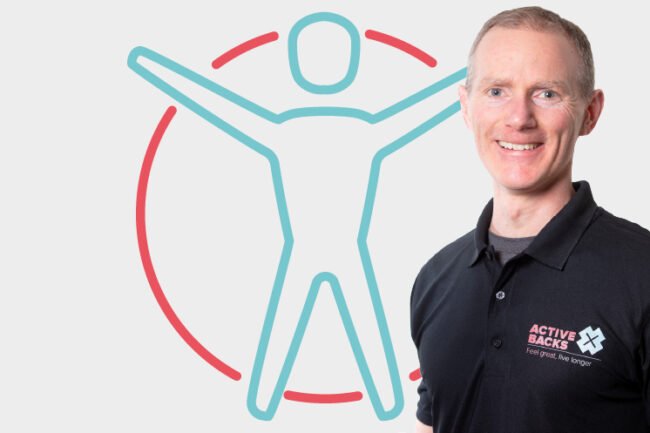Going back to work with lower back pain/sciatica
Going back to work with lower back pain/sciatica
This episode is entitled “Going back to work with lower back pain/sciatica” and it explains the four scenarios in which it’s okay to do this:
- Your presence isn’t a risk to someone else at work
- You acontribute to your work’s net productivity
- Going back to work doesn’t slow up your recovery
- You have a plan

Your presence isn’t a risk to someone else at work
If people depend on you being able to physically cope in the workplace and you’re suffering from lower back pain / sciatica, you should not be back yet. When your back spasms at any given moment and causes you to give away, that might put someone else at risk. If you’re transferring a patient from a bed to a gurney, or carrying a heavy load on a building site with somebody else, you’re putting that other person at risk.
You contribute to your work’s net productivity
By going back, are you going to be a dream on the other people at work? Is your presence going to hamper their ability to work productively? If the members of your team are constantly having to make allowances for you and that’s reducing their productivity, the company productivity goes down. That could be a scenario in which you’re as well to stay away from work and not essentially contribute to a reduced productivity.
Going back to work doesn’t slow up your recovery
Think about your long term health improvement and recovery. It’s great that you’re keen to get back to work, but if in doing so you’re reducing your rate of recovery, or perhaps even jeopardizing it entirely, it’s not a sensible move. If you go back to soon, there is a real danger that you’re going to end up with a chronic or recurrent problem. That’s clearly not good for you or for the business in the long run.
You have a plan
Being off work is very different than being at work. At work you have to sit at a desk, or dig the roads or whatever your job involves. It’s quite different to what you do when you’re not at work. It’s very important to plan for that return to work. If you’re going to have to sit and sitting has been really painful for you lately, you will have to practice sitting at home and build up the amount of sitting you can do before returning to work. Start low and build slow. Get back to that kind of level of activity, but you’re going to have to perform it when you get back to work.
The rest of your plan is essentially “use it or lose it, but don’t abuse it”. The more movement or tasks you can do that don’t aggravate your pain, the better. Carry on and do them, but don’t do things that aggravate your pain and set back your recovery. At least don’t do them to that dosage. If you know you can sit for 20 minutes, but if you sit for 25, your pain gets worse, plan to sit for 20 minutes and slowly build up to 21, 22, 23, 24 and so on. Ggradually increase those tasks that would previously have aggravated your pain.
If you need help with that plan, go to backpainandsciatica.com, where you can undertake a free assessment. The chat bot program will take you through a series of questions to work out which movements are bad for you, what you should be doing, which exercises are good, which are bad, and help you start to formulate that plan.


